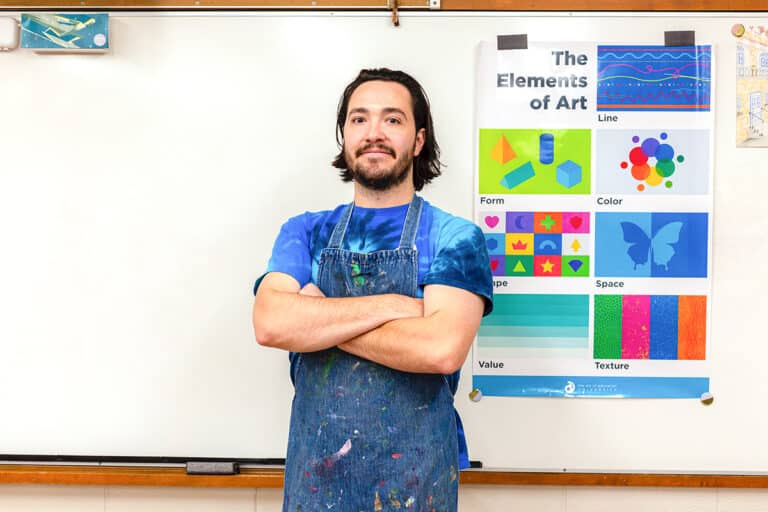My journey as a candidate for National Board Certification for teaching started in the fall of 2012. When I wrote about my initial excitement, I had no idea what I was getting myself into. If and when you decide to start your own journey as a candidate, these 10 tips will help you through the process.
1. Research funding and grants available prior to paying the $2,500 fee.
Depending on the state and district you teach in, there are optional ways to supplement the fee. Visit the National Board website for additional information.
2. Think about which certification fits you best.
Your certification will be based on the age of your students. The two art certification areas are “Early and Middle Childhood” or “Early Adolescent through Young Adult.” As a middle school art teacher, my certification area was Early Adolescent through Young Adult. Click here for a list of certificates.
3. Read the standards carefully.
Start reading what students are expected to know and how you will demonstrate mastery of these standards.
For Art/ Early and Middle Childhood Standards and Information click here.
For Art/ Early Adolescent through Young Adult Standards and Information click here.
4. Read the portfolio directions thoroughly.
This can be very overwhelming at first, but is worth your time. The directions will tell you exactly what you need to show in each entry. They also will help you as you begin to plan your lessons.
5. Start brainstorming ideas for the lessons you will focus on for each entry early.
Be sure you are referring back to the standards and portfolio directions as you plan.
6. Start video recording right away.
Give students time to get used to having a camera in the classroom prior to the scheduled recording. Using a boundary microphone helps the assessors hear your students.
7. Set aside time each week to write and work.
Communicate your needs with your family and friends. I tried to set aside time weekly to work on my boards. This was sacred time that I set aside to work on whatever entry I was focusing on at that time. In addition to writing and working alone, don’t forget to arrange time with a colleague or a support group. I participated in district and state support classes which allowed me to ask questions and gain reassurance in what I was doing. In addition, it required me to continue to work on my entries in between working sessions.
8. Find colleagues to read your papers.
There are many certified teachers across the country that would be willing to read your papers. All you have to do is ask.
9. Read these books.
The Annotated Mona Lisa: This is an excellent resource to use as you prepare for your assessments. I highly encourage you to start brushing up on your art history months before you take your assessments.
So, You Want to Become a National Board Certified Teacher?: This book was an excellent resource to refer to when I was writing and editing my papers.
10. Constantly remind yourself WHY you are going through this journey.
Regardless of what happens in the end (whether you pass on the first try or not) you will grow as an educator and will be a more reflective teacher who focuses on student learning.
I successfully completed my portfolio entries by the deadline of May 31st, 2013. I took the assessments in June and have been patiently waiting for my scores. National Board will release scores on or before December 31st, 2013. In the meantime, I do my best to stay positive, and focus on how much I’ve grown as an educator throughout the process. If you’re interested in applying for National Board Certification for Teaching, be sure to watch this video for some up and coming changes in the process.
Have you ever thought about becoming a National Board Certified Teacher? What questions do you have about the process?
Are you already certified? What tips can you share with AOE readers?
Magazine articles and podcasts are opinions of professional education contributors and do not necessarily represent the position of the Art of Education University (AOEU) or its academic offerings. Contributors use terms in the way they are most often talked about in the scope of their educational experiences.





